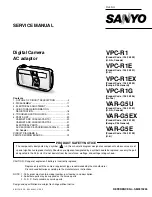
1300 Henley Court
Pullman, WA 99163
509.334.6306
www.digilentinc.com
PmodPS/2
™ Reference Manual
Revised May 26, 2016
This manual applies to the PmodPS/2 rev. C
DOC#: 502-094
Copyright Digilent, Inc. All rights reserved.
Other product and company names mentioned may be trademarks of their respective owners.
Page 1 of 4
Overview
The Digilent
PmodPS/2
is a module that allows users to attach a PS/2 compatible keyboard or mouse to their
system board.
1
Functional Description
The PmodPS/2 module is a standard PS/2 connector that by nature of the PS/2 supports N-KEY rollover. This is a
feature that guarantees that every movement and key press will be received and addressed. Naturally, whether or
not the key press will actually perform a function is dependent on the software, but the system board will still
receive all of the inputs.
2
Interfacing with the Pmod
The PmodPS/2 communicates with the host board via the
GPIO protocol. Both the keyboard and mouse will use a
data and a clock line to communicate their information to the system board. Specific details on how this is done
are available in their respective sections below.
The PmodPS/2.
Standard PS/2 port
Jumper to allow for an external power source
Small PCB size for flexible designs 1.0“ × 0.8” (2.5 cm ×
2.0 cm)
6-pin Pmod connector with GPIO interface
Follows
Digilent Pmod Interface Specification
Type 1
Example code available in
resource center
Features include:






















